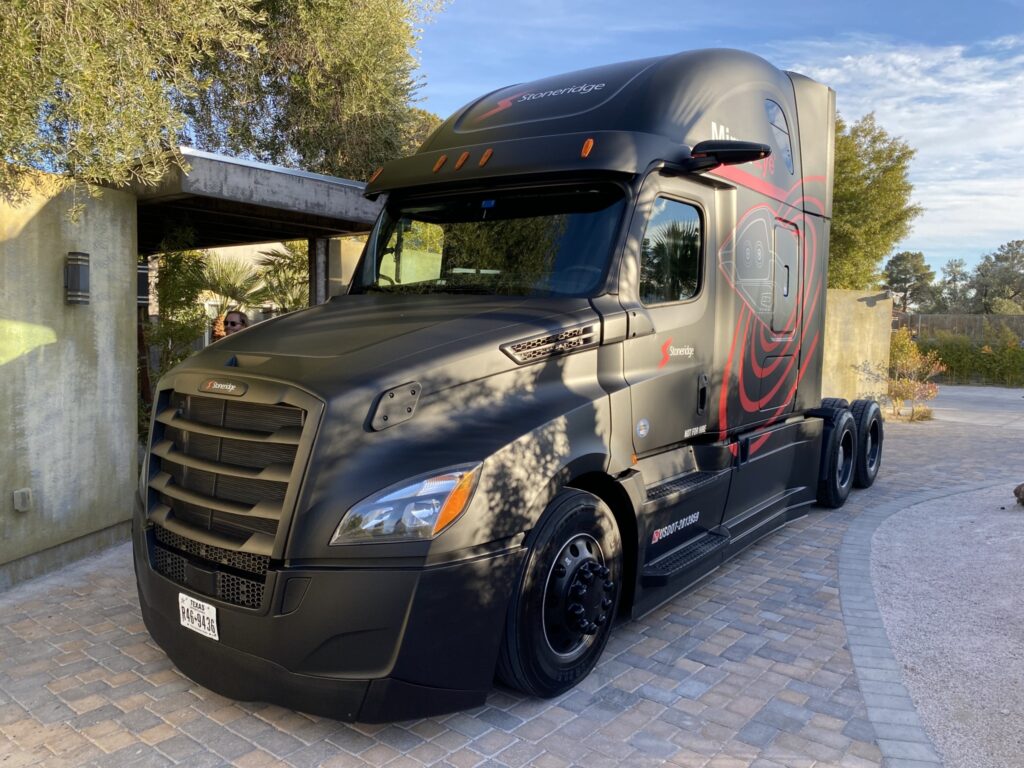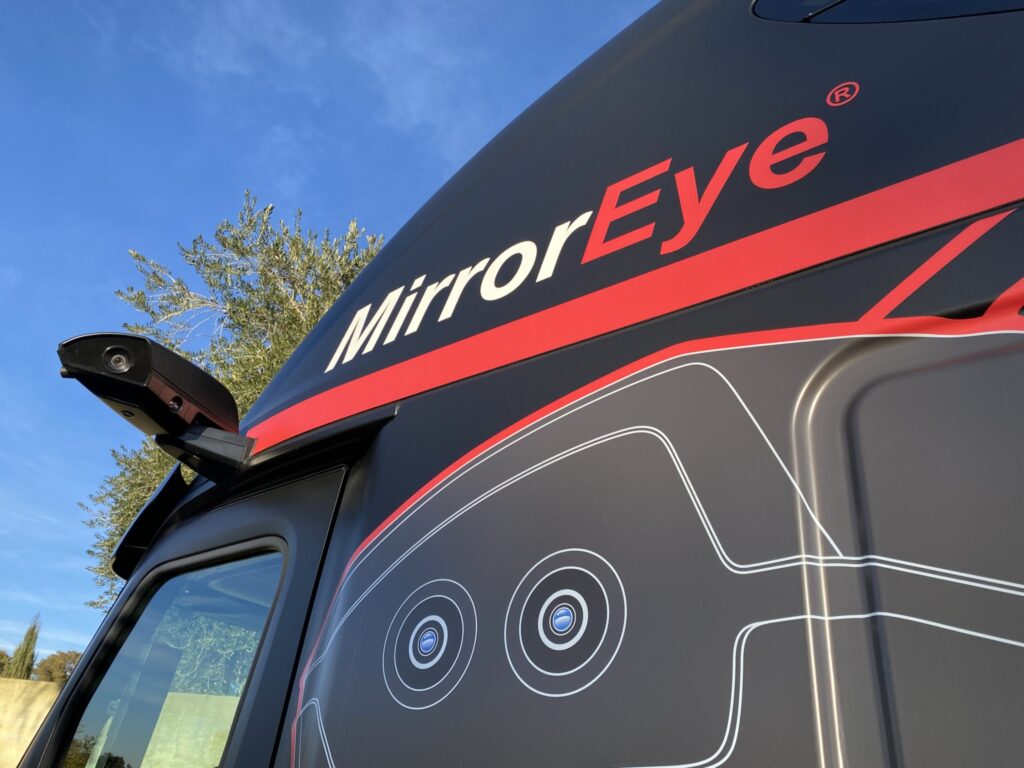MirrorEye maker confident that mirror exemption will continue
Stoneridge executives remain confident that regulators will further extend an exemption which allows MirrorEye camera monitor systems to be mounted on trucks in place of traditional west coast mirrors.
The manufacturer is in the final months of a five-year reprieve from rules that would otherwise require trucks to have two rear-vision mirrors.
Removing the traditional mirrors makes it possible to boost fuel economy 2-3% and annually reduce 2.5 tons of carbon dioxide emissions per vehicle, according to the company. Variations of its camera systems are also mounted on all four trucks featured in the SuperTruck II program because of that.

“FMCSA [the Federal Motor Carrier Safety Administration] is actually quite happy with the technology. They like what they’re seeing,” Stoneridge president and CEO Jim Zizelman said during a media briefing in Las Vegas. “We don’t see any roadblock at this point.”
European manufacturers can already produce trucks with cameras alone. While trucks in North America need to be produced with rearview mirrors, the exemption allows them to be removed.
OEMs, supported by Stoneridge, are working with FMCSA and the National Highway Traffic Safety Administration (NHTSA) to see regulations changed so mirrors can be left off altogether.
Cameras expand a driver’s field of view
MirrorEye systems include multiple digital cameras and software, feeding high-definition images to vertical monitors mounted on cab A-pillars. Wide-angle, narrow-angle, and look-down cameras expand a driver’s field of view by an estimated 25%. The multiple cameras also ensure that drivers still see other real-time images if an individual camera fails.

It’s about more than replacing mirrors, though.
High-definition digital cameras also offer color night vision, low-light sensitivity, and trailer panning capabilities. Stoneridge believes the latter feature could eliminate collisions involving right-hand turns, such as those where vulnerable road users like cyclists might be injured.
Adding rearview cameras
Stoneridge has even unveiled rearview cameras, adding lines to images that track trailer movements.
“It really minimizes the amount of getting out of the truck that is required by so many drivers,” Zizelman said.
The hardwired cameras require no additional wiring harness, either.
“The technology takes power off existing wiring in the trailer,” he explained. “The signal from the camera is sent superimposed on a power line or a ground line back to the cab, through the standard trailer-to-cab connector that’s been around more than 30 years.”
Graphics added to the displayed images include lines that track the trailer’s turn, calculated with machine learning and related software.
“It’s not just a rearview mirror camera. It’s offering these dynamic helping scenarios, including the backing up,” Zizelman said.
“We’re just making sure you don’t, you know, sideswipe the guy next to you.”
The images can also be recorded, often exonerating truck drivers who are not to blame for collisions, he said.
“From the standpoint of liability, the truth prevails.”
Have your say
This is a moderated forum. Comments will no longer be published unless they are accompanied by a first and last name and a verifiable email address. (Today's Trucking will not publish or share the email address.) Profane language and content deemed to be libelous, racist, or threatening in nature will not be published under any circumstances.